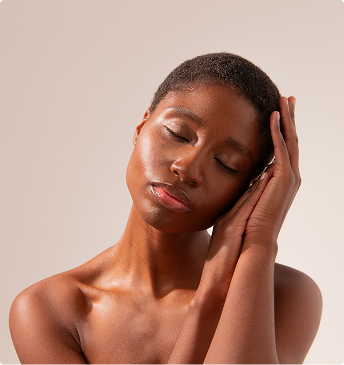Introducing Yoga’s (sleepy) little sister!
Here at Drowsy we’ve long known that pursuing a (ideally daily) yoga practice is one of the best ways you can help exercise your body and mind. Traditional yoga’s merits are almost too numerous to list, and you know what they say, a little bit of exercise and a quiet mind can do wonders for your holistic wellbeing. Despite this we appreciate that the ongoing discipline required isn’t for everyone but there’s a new strand of yoga that’s got everyone talking for all the right reasons. What if we told you there was now a branch of yoga that you can conduct from the comfort of your own bed?!
Introducing Yoga Nidra…
(See our Youtube Yoga Nidra audio hosted by The Yoga Flow)
WHAT IS IT?
Yoga Nidra, or yogic sleep as it’s more commonly known, is a seriously powerful meditation technique and one of the easiest yoga practices to develop and (crucially) maintain! Now before you roll your eyes and proclaim: “I’ve tried meditation and it just doesn’t work for me”, hear us out. While you rest comfortably in savasana (for those not familiar that’s yogi for lying on your back) this gentle yet 7structured meditation takes you through the five layers of self, addressing each layer in turn to make sure all are balanced, leaving you with a sense of wholeness along with deep rest and relaxation. All you have to do is relax and engage with the gentle commands as they come. Sounds amazing right?!
These five layers or ‘koshas’ as they’re sometimes known are key to implementing and getting the most out of your Yoga Nidra practice.
1/5 The Physical Layer:
This first layer is undoubtedly the easiest one to identify as it refers to your physical body. Think all of your individual muscles, bones, tendons, and ligaments. Any imbalances here are easy to identify as you can experience it directly through sight and touch. In a Yoga Nidra practice, this layer is attended to with a physical prompt like a body scan. You may hear cues from the meditation asking you to relax certain areas of your body in turn before moving on to the next. As this is performed the physical body drops away from your direct awareness before moving onto the next layer…
2/5 The Energy Layer:
In general Yoga practice energy travels throughout the body using our breath. To ensure balance in this area the meditation will ask you to simply observe your breathing by paying close attention to the sensation of inhalation and exhalation. The aim here is that as you focus on your breath, some of the energy restrictions or blockages within your body release allowing it to flow unrestricted. As you progress further through the practice this layer, just like the physical layer, drops away.
3/5 The Mental / Emotional Layer:
The third kosha is often loosely translated as the ‘mind body’ and is often where our emotions are stored. It is often the layer that needs the most attention as many try to avoid dealing with it by pushing down and ignoring our emotions until they cannot be ignored and come out as physical reactions. Think: anger, tears, headaches manifesting from stress etc. Sound familiar? Throughout the practice you’ll be asked to notice or acknowledge general sensations of heaviness or lightness, or to recall a time when you were relaxed (and then a time when you were not). Think of this as a deep tissue massage for your emotions, exposing and then releasing any areas of tension. Once again once this layer has been addressed, it too drops away into the background of our consciousness…
4/5 The Higher Intelligence Layer:
Often referred to as the ‘wisdom body’ or your intuition / gut instinct. This is often one of the most challenging layers to connect with. One way to think of it is to identify a time that you say something unexpectedly insightful, and you asked yourself “where did that come from?!” That’s your wisdom body at work. In Yoga Nidra, this layer is worked with through a visualisation or a story where you observe yourself in different scenarios.
5/5 The Bliss Layer:
Finally, you reach the subtlest layer and is arguably the most uncomplicated because it simply involves, silence. Once this layer is reached it’s described by Yogis as a total absorption into a blissful, divine like state. This is characterised by a period of silence at the end of the meditation before you’re gently brought out of the meditative state.
You know we’re obsessed with all things sleep so you know we had to do a deep dive to discover its benefits…
WHY DO WE LOVE IT?!
You’ve guessed it, all this relaxation combined with lying down means that Yoga Nidra is being heralded as being responsible for making people feel as rested as a full night’s sleep! It promotes a deep rest and relaxation that isn’t found in your average yoga or meditation practice and the stages of the body scan and breath awareness alone can be practiced helping calm the nervous system, reducing stress. If you’re a regular around these parts you’ll know we’re committed to helping you get the best, most restorative night’s sleep possible, so we knew we needed to find a way to help you all incorporate a Yoga Nidra practice into your nightly sleep rituals...
That’s why we’ve partnered up with award winning yoga teacher Jay from The Yoga Glow who has curated a bespoke Yoga Nidra practice for Drowsy entirely centred around getting you in the best space possible mentally and physically ahead of heading off to the land of nod. Simply spritz your Sleep Zen Pillow Spray, slip on your Silk Sleep Eye Mask, and sink into your sheets to get prepared and allow Jay to take you through the meditation to get more quality sleep tonight!
See our Youtube Yoga Nidra audio hosted by The Yoga Flow.
Sweet (yogi) dreams.
Drowsy.






